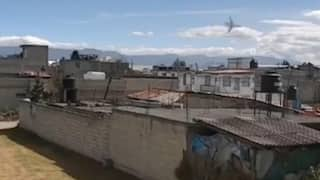In Saudi Arabia, Excavation At AlUla Site Looks To Find Remnants Of Ancient Arab Kingdoms
The 2,000-year-old archaeological site of Mada’in Saleh in AlUla was declared a UNESCO World Heritage Site — Saudi Arabia’s first — in 2008.

New Delhi: A team of archaeologists from France and Saudi Arabia is excavating five sites in the arid desert and mountains of AlUla to find remnants of the kingdoms of Dadan and Lihyan that flourished thousands of years ago.
"It's a project that really tries to unlock the mysteries of (these) civilisations," a Reuters report quoted archaeologist Abdulrahman Al-Sohaibani as saying. Al-Sohaibani is co-directing the Dadan archaeological mission.
The Dadanite and Lihyanite civilisations were important regional powers at their time.
The kingdoms spanned roughly 900 years until 100 CE, and they controlled vital trade routes, according to historians.
Since very little is known about them, the archaeologists are looking to learn more about their economy, social life and worship rituals, the Reuters report said.
Excavations undertaken in the past were limited to the main sanctuary area, Jerome Rohmer, a researcher with the French National Center for Scientific Research, told the news agency.
He said they want to have a “comprehensive overview” of the site’s chronology, layout, material culture and economy.
Al Ula And Its historical Importance
AlUla region is known for the tombs of Al-Hijr (Mada’in Saleh), or Hegra — an ancient site carved into rocks by the Nabateans, who were the pre-Islamic Arab people.
The famous ancient city of Petra, an archaeological site in neighbouring Jordan, was also built by the Nabateans.
The 2,000-year-old archaeological site of Mada’in Saleh was declared a UNESCO World Heritage Site — Saudi Arabia’s first — in 2008.
AlUla was opened to the public in 2019, and has been a major tourist destination since.
Dadan finds mention in the Old Testament, and the Lihyanite kingdom stretching from Medina in the south to Aqaba in the north in modern-day Jordan was one of the largest of its time, according to the Royal Commission for AlUla.
Saudi Arabia had earlier this year unveiled its plans for AlUla. It was reported that Crown Prince Mohammad bin Salman Al Saud hopes to transform it into an international tourist destination for art, culture, and nature .
With the kingdom looking to open up to the world, and diversify its economy that is mainly dependent on oil, AlUla project is part of its move to preserve pre-Islamic heritage sites to attract non-Muslim tourists.
Saudi Arabia’s “Journey Through Time Masterplan” is a $15 billion project. According to Arab News, the project will be completed in 15 years’ time in three phases — with the first set for completion in 2023, second in 2030, and the third in 2035.
The first phase has already seen the expansion of AlUla airport.
The Royal Commission for AlUla is calling the ancient region “the world’s largest living museum, where contemporary art coexists with ancient heritage”.
According to reports, Saudia Airlines is introducing a special Museum in the Sky flight, offering its passengers an in-depth look at AlUla. The flight from Riyadh to AlUla will operate on November 4.






































